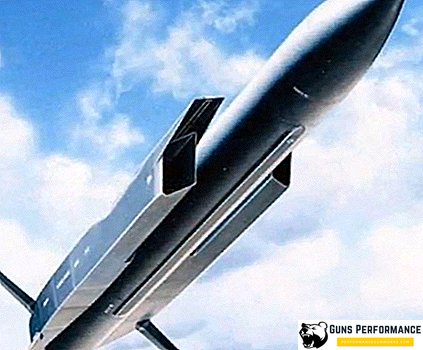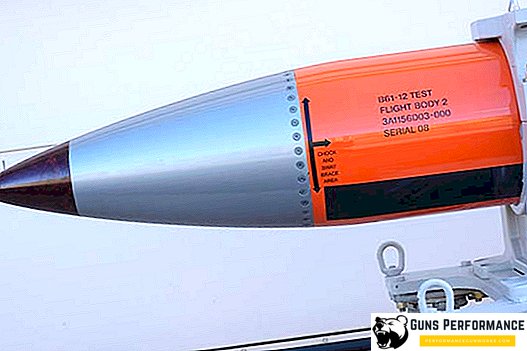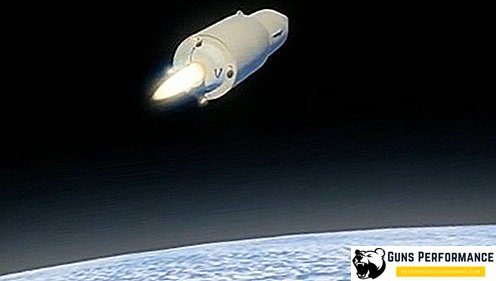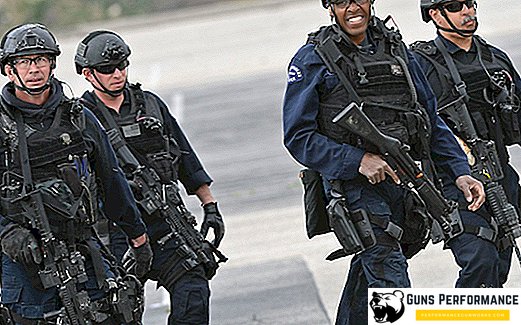If during the Cold War era, the USSR and the Warsaw Pact countries paid more attention to the development of ground forces and the improvement of rocket weapons, then aircraft carriers became the symbol of US military power and NATO. The carrier strike group (AUG) was and remains the main strike force of the US Navy, which allowed this country to conduct military operations anywhere in the world.
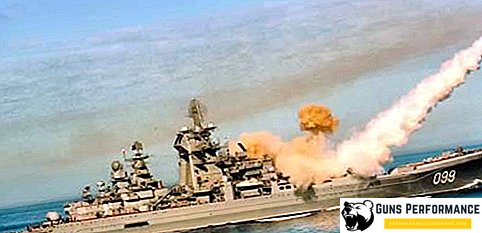
For the USSR, American AUG became a real headache. For many reasons (primarily due to lack of funds), the Soviet Union could not oppose anything similar to America, but it needed the means to effectively combat American aircraft carriers. Throughout the Cold War years, the Soviet military-industrial complex was seeking an asymmetrical response to this American threat. Cruise anti-ship missiles, the development of which began in the mid-50s, were particularly suitable for the role of "aircraft carrier killer".
Thanks to decades spent on design development in this area, today Russia has the best anti-ship missiles in the world, one of which is the P-700 Granit. None of the countries of the world have anything like this: these anti-ship cruise missiles significantly exceed their foreign competitors in terms of flight range, weight of the warhead, speed, and other characteristics.
History of creation
The first cruise missile, which was put into service, was produced serially and participated in hostilities, was the German V-1. The Germans used it at the end of the war against Britain, but this weapon could no longer change the course of hostilities.
After the end of the Second World War, German rocket technologies fell into the hands of the Allies and became the basis of their own further developments. In the USSR, a talented rocket designer Vladimir Chelomei and his colleagues worked in this direction.
Cruise missiles looked particularly promising as a means of dealing with enemy aircraft carriers. In 1959, the USSR adopted the P-5 anti-ship cruise missile (RCC), created under the leadership of Chelomey, and intended to destroy enemy surface ships, including aircraft carriers. The rocket could carry a nuclear charge.
The P-5 had a speed close to the speed of sound, a warhead weighing one ton, and also a range of 500 kilometers. Very good performance, even today, but there was one problem: this rocket could only be fired from the surface position. This deprived the attacking submarine of its main advantage - stealth. It was necessary to look for an alternative solution.
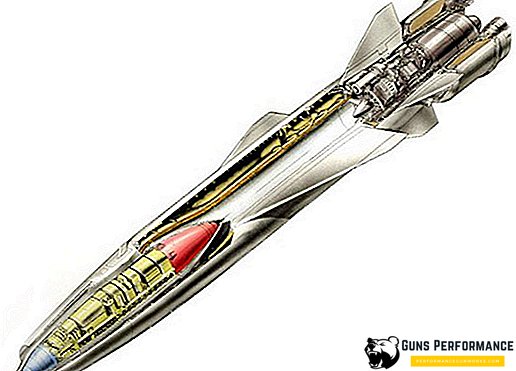
The development of a new missile system began in 1969. Chelomey proposed to create a single complex to arm both submarines and surface ships. The new rocket was supposed to be able to submarine launch and have a high flight speed and range. The missile complex received the name "Granit", its development took almost fifteen years.
Flight design tests of the new rocket began in 1975, and state - in 1979. In 1983, the anti-ship complex P-700 was adopted.
When developing the P-700 missile, the entire experience in the production and use of such weapons was taken into account. The designers have worked out all possible design options for the future rocket, its control system, deployment and launch from a submarine.
P-700 was adopted by the submarines of the project 949 Granit and 949A Antey, as well as surface ships of 1144 Orlan, 1144.2 Orlan and 1143.5 Krechet.
Anti-ship missiles "Granit" are still in service with the Russian Navy, although they are already considered obsolete. Such weapons were installed on nuclear submarines of the 949A Antey project (24 anti-ship missiles each). Twenty Granit cruise missiles armed with the flagship of the Northern Fleet, the heavy nuclear cruiser Peter the Great, and another 12 installed on the aircraft carrying cruiser Admiral Kuznetsov.
P-700 "Granit" has never been used in real hostilities, experts have different attitudes to the effectiveness of these weapons.
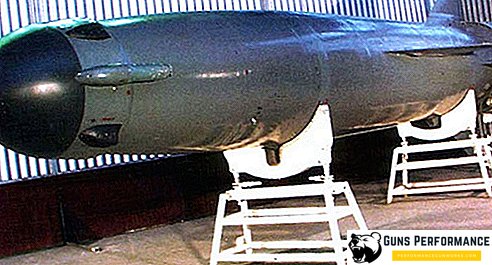
Device
Rocket "Granit" is made according to the normal aerodynamic configuration, it has a cigar-like shape, the annular air intake is located in front of the rocket.
P-700 is equipped with folding wings of high sweep, located in the central part of the fuselage, as well as cruciform tail (it also unfolds).
The rocket is equipped with a cruise propulsion engine KR-21-300, located in its rear part. On most of its trajectory, the rocket develops a speed 1.5 times the speed of sound (1.5 Mach), which greatly complicates its detection and destruction. At high altitude, the P-700 can accelerate to 2.5 M. A straight-through jet engine was developed specifically for the Granita, which could accelerate the rocket to a speed of 4 Mach.
It is worth highlighting the autonomous control system of this RCC. The computing machine, which is the basis of the control system, has several information channels, it is able to successfully resist means of electronic warfare.
The P-700 “Granit” rocket is located in a special launch container, which is filled with seawater before starting to equalize pressure (this happens on surface ships). Then, using special solid-fuel accelerators, the P-700 comes to the surface of the water. The mid-flight engine starts to work in the air, wings and tail stabilizers open.
"Granite" can be equipped with various types of combat units. This may be a high-explosive penetration warhead, weighing up to 750 kilograms. Also, the rocket can be equipped with a nuclear warhead of up to 500 kilotons.
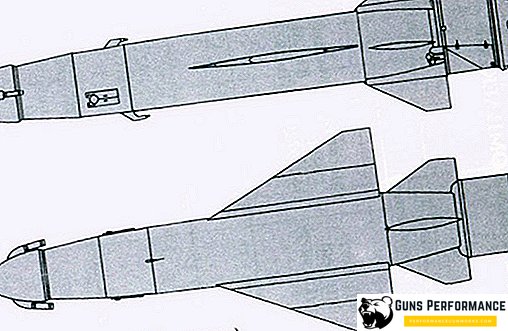
The guidance head is active, of a radar type.
P-700 "Granit" is a very "intellectual" rocket. Immediately after launching, it rises to a great height and marks its target. After that, the rocket is reduced to the lowest possible height and follows on it until the target is hit. This flight mode greatly complicates the work of enemy missile defense.
Rockets "Granit" can hunt for their prey "flock". The first P-700 captures the target (or targets) and directs all the other missiles at them. Each of them gets its own purpose, but if the missile gunner is destroyed, then another member of the "flock" assumes its functions. Rockets classify targets according to their importance, choose the most optimal attack tactic and its plan. The electronic control system of the rocket contains the data of all modern ships, the methods of their counteracting attacks. Missiles setting at a target constantly exchange information with each other.
All this allows the P-700 to decide what is in front of it: the AUG, the usual convoy or the landing party to act accordingly. If the ship is destroyed by one rocket, the others choose other targets for themselves.
Each rocket is equipped with a radar jamming device and can throw out false targets.

The launch of the rocket comes from a special container, which is set at an angle of 47º.
Specifications
Description
| Designation | Complex | P-700 "Granite" | |
| Rocket | 3M45 | ||
| Control system | inertial with active radar guidance | ||
| Dimensions and weight | |||
| Length m | 10 | ||
| Wingspan, m | 2,6 | ||
| Diameter, m | 0,85 | ||
| Starting weight, kg | 7000 | ||
| Warhead type | high explosive-cumulative | nuclear (500 kt) | |
| Weight, kg | 750 | ||
| Power point | |||
| Marching engine | TRD KR-93 | ||
| Flight data | |||
| Speed km / h | on high | 2800 (2,5) | |
| on the ground | (1,5) | ||
| Starting range, km | 550 (625) | ||
| Minimum flight height, m | 25 | ||
| Ceiling, m | 14000-17000 | ||
Comparison with other CRPs
If we compare the Granit missile system with its foreign counterparts, then we must recognize that this rocket is the best to date.
The launch weight of the 3M45 missile is ten times (!!!) greater than the similar parameters of the American Harpoon anti-ship missile. Also, "Granit" is more than two times as much as an American by the mass of a warhead, twice as fast. P-700 has a five-fold greater range of destruction.
An even greater difference in performance is with the French Exeset anti-ship missile, the Chinese C-802 and the Israeli Gabriel.
The destructive power of the 3M45 missile allows for a single hit to destroy a modern destroyer or cruiser. For a guaranteed destruction of an aircraft carrier, 8-10 such missiles are needed.
These Soviet missiles are really good and have no analogues in the world, but there is one problem associated with the detection of the target and the guidance of the P-700 missile to it. That it is the "Achilles heel" of this complex. This causes doubts that the Granit missiles can sink a modern aircraft carrier.
Can Granit destroy modern AUG?
Disputes regarding the possibility of the P-700 hitting an aircraft carrier have been going on for quite some time. In theory, the Granit anti-ship missiles pose a great danger to any warship, including an aircraft carrier. But there is one problem that reduces all the advantages of this rocket to almost zero. This is target designation.
When firing long distances, the homing head P-700 cannot independently capture a target, it needs target designation, which theoretically can be done from airborne aircraft or from space.
To destroy the enemy AUG using the Granita, a Russian submarine or a surface ship must detect and classify the target, approach it at a distance of volley, launch missiles that can hit enemy ships. It should not be forgotten that carrier strike groups are a very complex goal. They are extremely protected by the most varied means of air defense, missile defense and electronic warfare, constantly maneuvering, have a powerful aviation group, cover themselves up with submarines. It is very difficult to hit this target (and even get close to it at a distance of rocket volley).
The current Russian fleet is extremely limited in the issue of target detection. The radius of their detection is usually limited to the limits of the radio horizon. Helicopters possessed by some Russian warships are not very suitable for solving this problem, primarily because of their short range. It is inefficient to produce it with the help of the Tu-95RC aircraft, since a scout sometimes needs a large number of hours to arrive in a certain area of the World Ocean.
During Soviet times, the use of submarine nuclear-powered cruisers equipped with the Granit anti-ship missiles was based on a powerful naval intelligence system, which had information about the likely enemy in all zones of the ocean theater.
It was based on ground-based radio intelligence centers, located both in the USSR and beyond. We can recall similar centers located in Cuba, in Vietnam (Cam Ranh), in South Yemen. Today there is nothing of this.
In addition to ground bases, the Soviet Union had an effective system of space reconnaissance and target designation, which could detect an enemy ship almost anywhere in the oceans. And not only to discover: this system constantly monitored the probable enemy's AUG and in the event of war could give target indications for rocket weapons.
PKR "Granit" can be called only one of the components of the Soviet system for the destruction of aircraft carriers, its second element was the Legend space target designation system. It began to develop in the mid-70s under the leadership of Academician Keldysh.
The Legend project was to create a satellite constellation in Earth orbit capable of transmitting information on the movement of surface targets and target designation for rocket weapons. The structure of this group included the apparatus of both active (radar) and passive (bearing objects) reconnaissance. The Legend system was able to impose Soviet rockets at any point on the earth’s surface.
However, at the moment "Legend" has long become history. In 1998, the last satellite constellation unit finished its work. Currently, a similar Liana system is in the formative stage.
Therefore, any Russian ship equipped with anti-ship missiles "Granit" will be detected much earlier than it can go within a distance of launching these missiles. If we talk about launching missiles from a submarine, then there are some difficulties.
To produce a successful salvo of P-700 missiles, a submarine must enter the near zone of the anti-submarine defense warrant, where the probability of finding a submarine will be very high. Even with the successful launch of missiles, not all of them will be able to achieve their goals, since AUG has a very strong air defense and missile defense.
To date, the likelihood of the destruction of the American aircraft carrier by any means of attack, which has the Russian Navy, it seems highly unlikely. Without resuscitation of the global intelligence system, this is very problematic. Is that on the missiles will be installed nuclear warheads.


